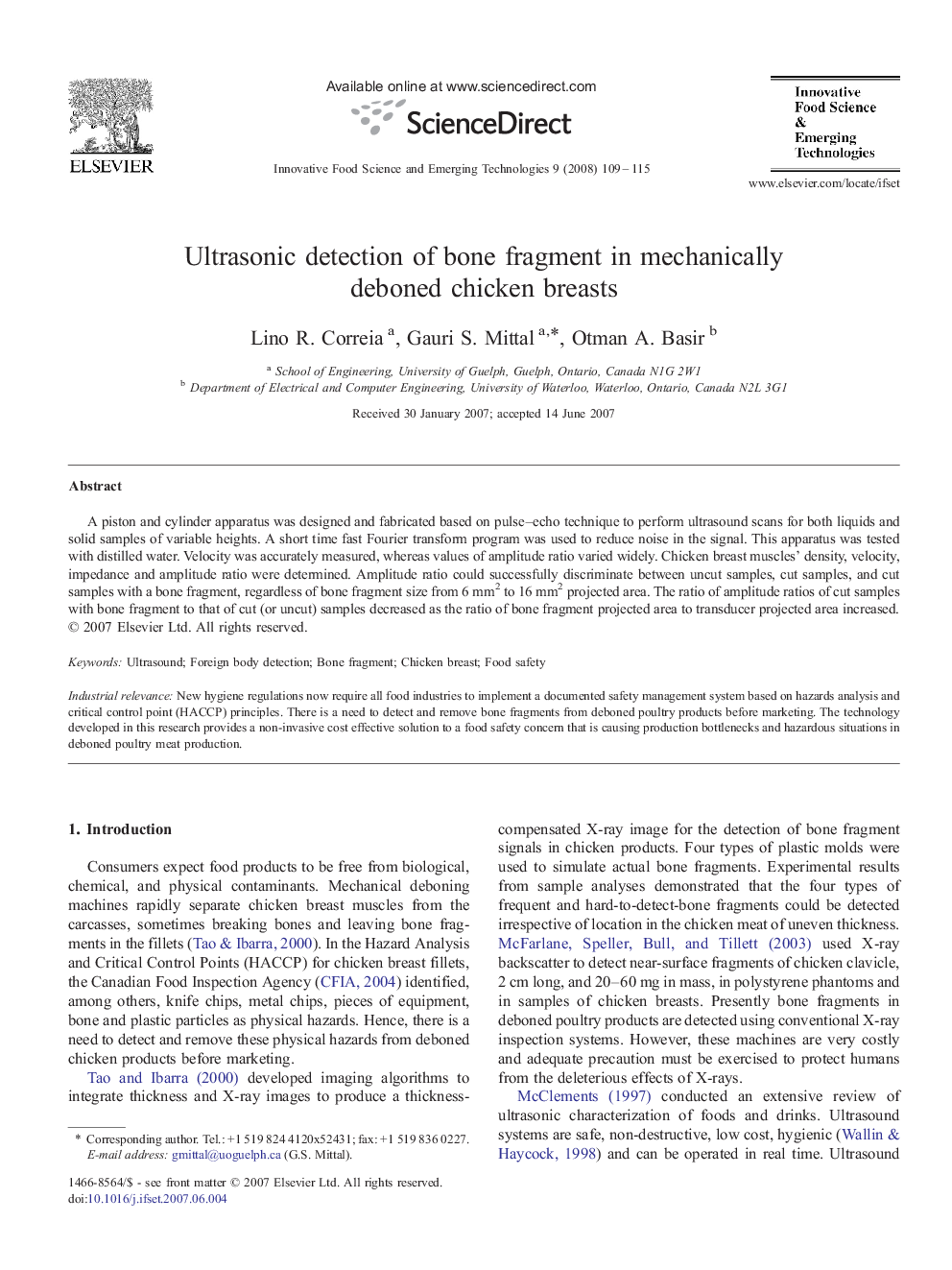| Article ID | Journal | Published Year | Pages | File Type |
|---|---|---|---|---|
| 2087482 | Innovative Food Science & Emerging Technologies | 2008 | 7 Pages |
A piston and cylinder apparatus was designed and fabricated based on pulse–echo technique to perform ultrasound scans for both liquids and solid samples of variable heights. A short time fast Fourier transform program was used to reduce noise in the signal. This apparatus was tested with distilled water. Velocity was accurately measured, whereas values of amplitude ratio varied widely. Chicken breast muscles' density, velocity, impedance and amplitude ratio were determined. Amplitude ratio could successfully discriminate between uncut samples, cut samples, and cut samples with a bone fragment, regardless of bone fragment size from 6 mm2 to 16 mm2 projected area. The ratio of amplitude ratios of cut samples with bone fragment to that of cut (or uncut) samples decreased as the ratio of bone fragment projected area to transducer projected area increased.Industrial relevanceNew hygiene regulations now require all food industries to implement a documented safety management system based on hazards analysis and critical control point (HACCP) principles. There is a need to detect and remove bone fragments from deboned poultry products before marketing. The technology developed in this research provides a non-invasive cost effective solution to a food safety concern that is causing production bottlenecks and hazardous situations in deboned poultry meat production.
